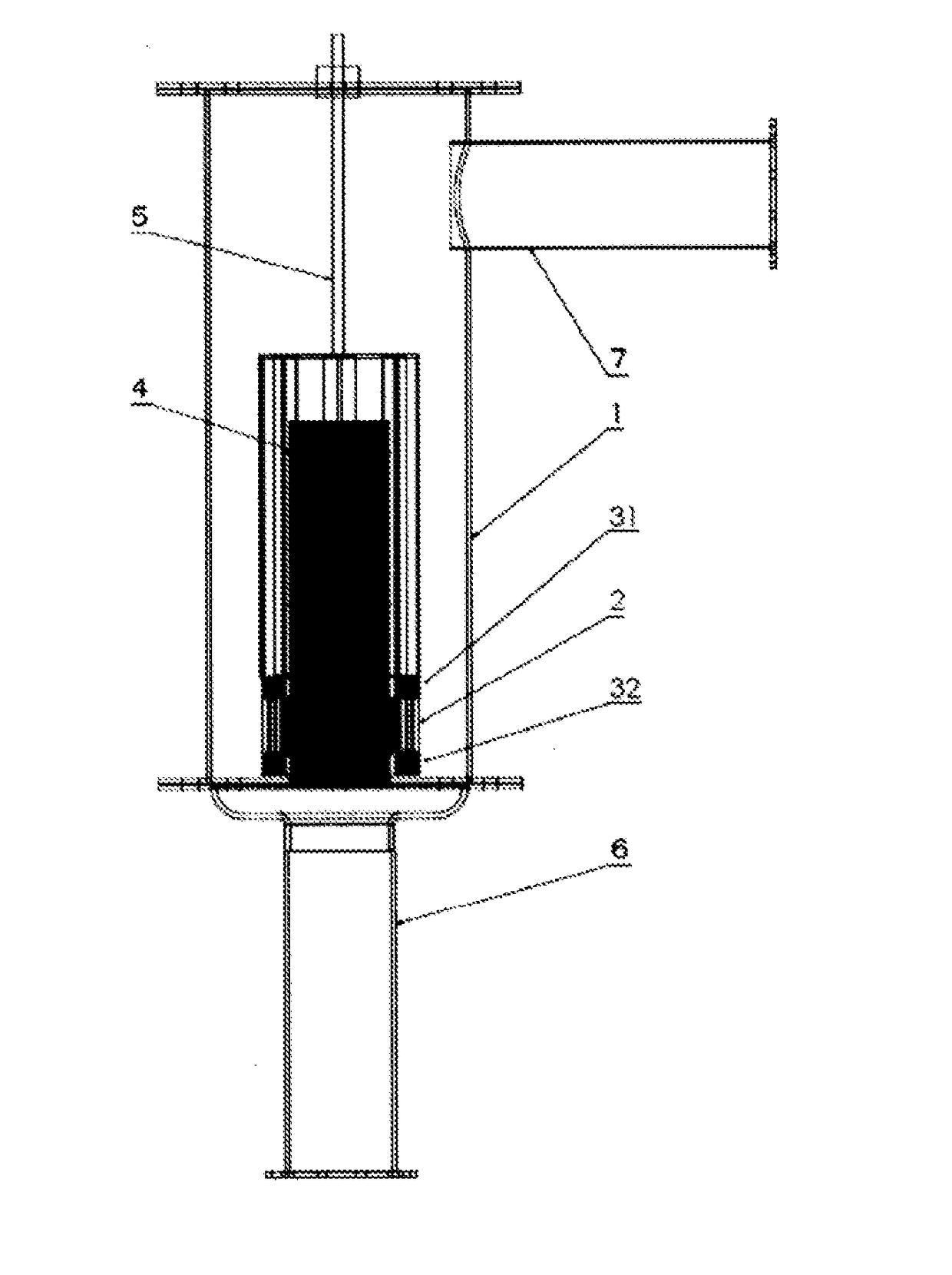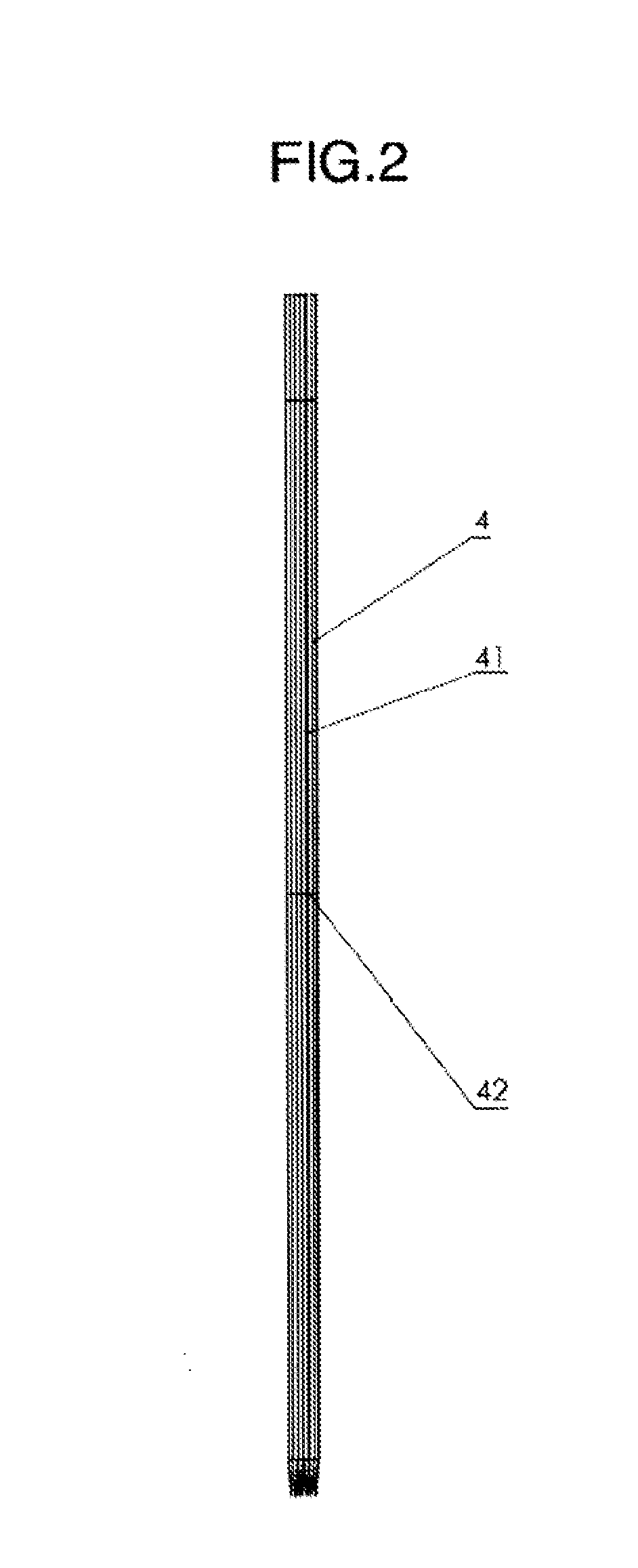Small load-following nuclear power generation system using heat deformation of reflector caused by thermal expansion phenomenon
- Summary
- Abstract
- Description
- Claims
- Application Information
AI Technical Summary
Benefits of technology
Problems solved by technology
Method used
Image
Examples
first embodiment
[0095]The reflector, which is a key feature for load following control in the present invention, will now be described with reference to FIGS. 3A, 3B, and 4. As illustrated in FIG. 3A, the reflector has a double wall structure in which both walls made of graphite have a thickness of 10 cm. The reflector is circumferentially divided into eight sections of two types: reflectors A 21 and reflectors B 22. The two types of reflectors alternate and have different radiuses. This double wall structure is capable of accommodating one wall of adjacent reflectors each other when the reflectors are circumferentially shifted. As illustrated in FIG. 3B, the double wall structure having the reflectors A 21 and the reflectors B 22 is fixed by reflector support plates 20. The reflectors B 22 have an inner diameter of 52 cm and a height of 50 cm. These two types of reflectors in the double wall structure are shifted to each other to form gaps (slits) between the reflectors A 21 and the reflectors B 2...
second embodiment
[0099]A way of increasing the temperature of the critical point, at which Keff reaches 1, will now be described. As illustrated in FIG. 7, the four reflectors A 21 and the four reflectors B 22 into which a reflector is divided are provided, and these reflectors have overlaps 23. The slit widths associated with the thermal expansion in the reflectors are adjusted using the overlaps. FIG. 8 shows the calculations of Keff and the slit widths associated with the thermal expansion when the reflectors have overlaps. As is apparent from the drawing, the temperature at which Keff reaches 1 increased to about 500° C. In this manner, adjusting the lengths of the overlaps in the division reflectors allows the temperature at which Keff reaches 1 to be adjusted.
third embodiment
[0100]FIG. 9 illustrates still another embodiment of the reflector structure according to the present invention. The first and second embodiments shift the division reflectors circumferentially to create each slit between reflectors, thereby controlling Keff. The present embodiment moves reflectors radially to control Keff. The mechanism will be described with reference to FIG. 9. In order that double-wall reflectors 21, 22, which are eight divisions, can move away from the fuel assemblies with rising temperature, the thermal expansion of adjustment springs 26 is used. First, a fixation cylinder 24 for fixing the adjustment springs 26 is provided outside the eight divisional double-wall reflectors 21, 22. Next, eight spring drive reflector moving jigs for as many division reflectors are mounted outside the fixation cylinder, and each jig has a combination of an adjustment spring support plate 27, a reflector adjusting rod 28, and an adjustment spring 26. The support plate 27 receive...
PUM
 Login to View More
Login to View More Abstract
Description
Claims
Application Information
 Login to View More
Login to View More - R&D Engineer
- R&D Manager
- IP Professional
- Industry Leading Data Capabilities
- Powerful AI technology
- Patent DNA Extraction
Browse by: Latest US Patents, China's latest patents, Technical Efficacy Thesaurus, Application Domain, Technology Topic, Popular Technical Reports.
© 2024 PatSnap. All rights reserved.Legal|Privacy policy|Modern Slavery Act Transparency Statement|Sitemap|About US| Contact US: help@patsnap.com










